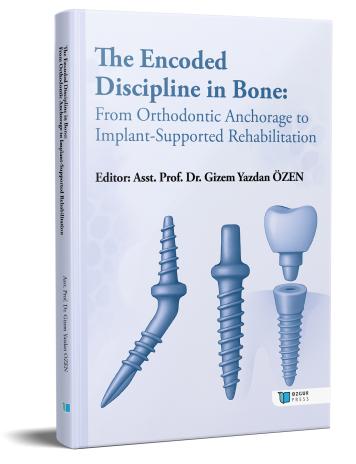
Orthodontic Implants
Chapter from the book:
Özen,
G.
Y.
(ed.)
2025.
The Encoded Discipline in Bone: From Orthodontic Anchorage to Implant-Supported Rehabilitation.
Synopsis
Anchorage control in orthodontic treatments is one of the fundamental factors directly affecting treatment efficacy. Traditional anchorage methods, which mostly rely on dental structures and require patient cooperation, can result in undesired tooth movements and anchorage loss. In this context, temporary anchorage devices (TADs), especially mini-implants, offer alternative and reliable solutions in modern orthodontics. Mini-screws can serve as both direct and indirect anchorage elements in various orthodontic procedures—such as maxillary expansion, molar distalization, anterior tooth intrusion, and management of occlusal plane irregularities. Classified according to their surface characteristics and anatomical insertion sites, these implants provide stable anchorage, increase treatment predictability, and shorten treatment duration. A wealth of literature demonstrates that mini-implant–supported systems yield successful outcomes in balancing both skeletal and dental effects. This review comprehensively covers the classification, clinical applications, and advantages of orthodontic implants, emphasizing the role of mini-screws in contemporary orthodontic treatment protocols.

